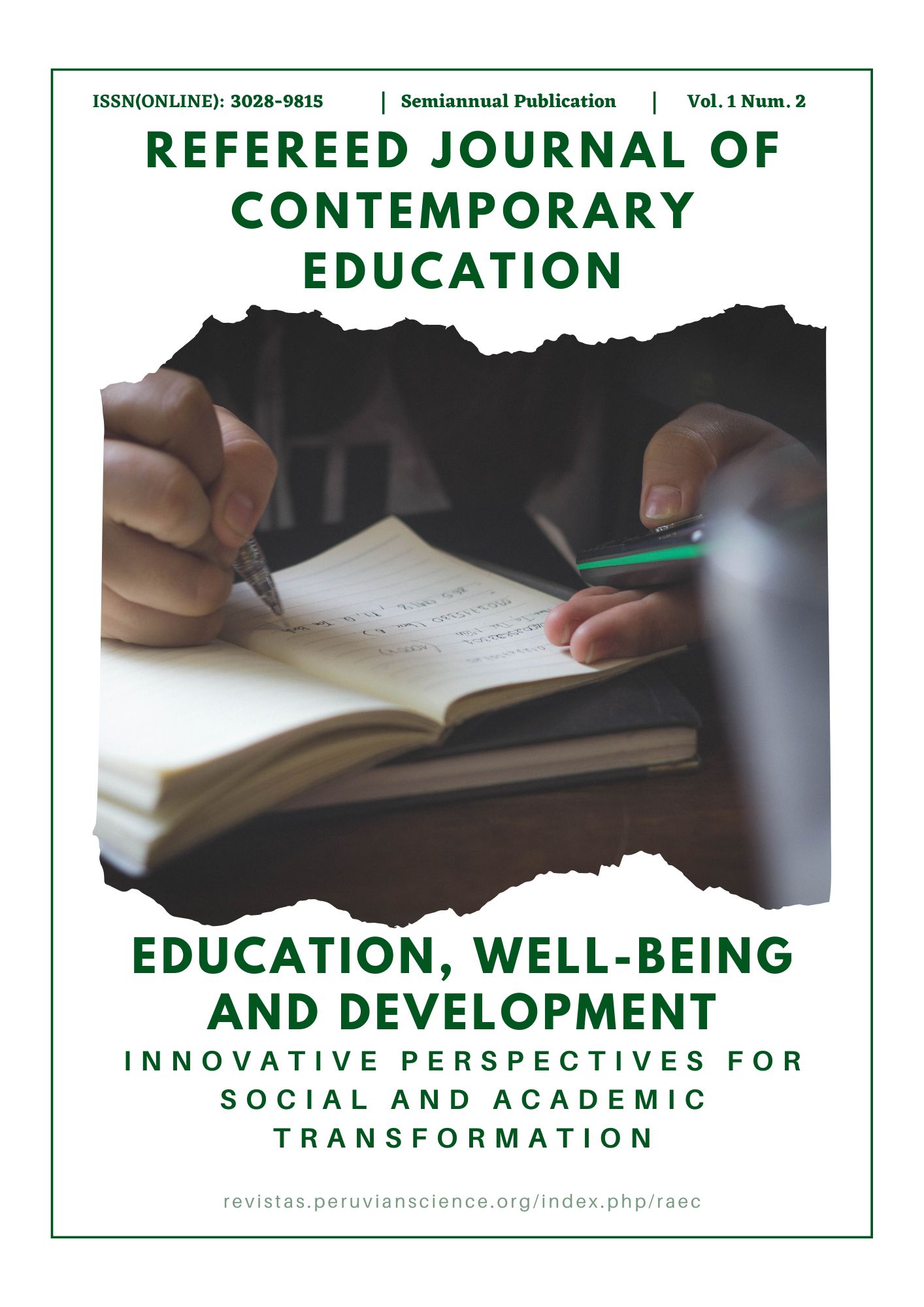Emotional Well-being and Work Environment: A Study in the Regional Directorate of Education of Piura
DOI:
https://doi.org/10.5281/zenodo.14798763Keywords:
Emotional well-being, work climate, public education, Regional Directorate of Education, PiuraAbstract
The study "Emotional Well-being and Work Environment: A Study in the Regional Directorate of Education of Piura (DREP)" examines how the work environment and organizational support influence the emotional well-being of employees in this public educational institution. Its objective is to understand the perceptions of public servants about the work environment and its emotional impact, given the limited demands and resources in the sector.
Using a qualitative phenomenological approach, the study purposively selected 30 employees from various roles and applied semi-structured interviews and focus groups. Data were analyzed using thematic coding in NVivo, revealing three key themes: organizational support, communication and interpersonal relationships, and recognition and appreciation. Participants highlighted the lack of resources and support in critical situations, interdepartmental communication problems, and the absence of formal recognition programs as factors that limit their emotional well-being and job satisfaction.
Findings suggest that improving emotional well-being in DREP requires organizational support strategies, effective communication, and fair and equitable recognition programs. The study is supported by organizational theories such as Eisenberger's Organizational Support Theory and Herzberg's Motivation-Hygiene Theory, contributing to both literature and practice in the public educational sector. Comparative and quantitative research is recommended to extend these findings and evaluate their applicability in other similar institutions.
Downloads
References
Braun, V., & Clarke, V. (2006). Using thematic analysis in psychology. Qualitative Research in Psychology, 3(2), 77-101. https://doi.org/10.1191/1478088706qp063oa
Eisenberger, R., Huntington, R., Hutchison, S., & Sowa, D. (1986). Perceived organizational support. Journal of Applied Psychology, 71(3), 500-507. https://doi.org/10.1037/0021- 9010.71.3.500
García, P., & Martínez, R. (2021). El bienestar emocional y su impacto en el desempeño laboral en el sector público educativo. Revista de Administración Pública, 47(3), 214-229.
Herzberg, F. (1966). Work and the Nature of Man. World Publishing.
Huppert, F. A., & So, T. T. C. (2013). Flourishing across Europe: Application of a new conceptual framework for defining well-being. Social Indicators Research, 110, 837- 861. https://doi.org/10.1007/s11205-011-9966-7
Litwin, G. H., & Stringer, R. A. (1968). Motivation and Organizational Climate. Harvard University Press.
Luthans, F., Youssef, C. M., & Avolio, B. J. (2007). Psychological Capital: Developing the Human Competitive Edge. Oxford University Press.
Ramírez, C., & Mendoza, J. (2019). El clima laboral y su influencia en el bienestar emocional en el sector educativo de América Latina. Estudios de Psicología Organizacional, 15(2), 142-155.
Ryff, C. D. (1995). Psychological well-being in adult life. Current Directions in Psychological Science, 4(4), 99-104.
Sánchez, M., & Morales, T. (2021). Impacto del bienestar emocional en la percepción del clima laboral. Revista de Psicología Aplicada al Trabajo, 9(1), 32-49
Published
How to Cite
Issue
Section
License
Copyright (c) 2025 Arbitrated Journal of Contemporary Education

This work is licensed under a Creative Commons Attribution-NonCommercial-NoDerivatives 4.0 International License.















